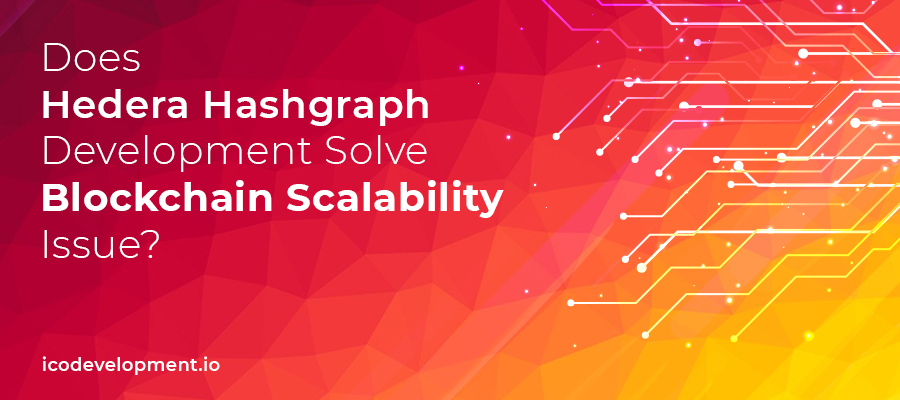Hedera Hashgraph is a new type of blockchain development which enables private blockchain solutions. It is being considered as the future of blockchain technology use for governing bodies to control the flow of information. But one of the issues faced by all types of blockchain development company is scalability. So the real question arises, will hedera hashgraph be able to solve this blockchain issue or not. To know first we will understand the Hedera Hashgraph.
What is Hedera Hashgraph?
Hedera hashgraph is a type of enterprise blockchain. Unlike Hyperledger projects, hedera hashgraph is a private blockchain with industry leaders as the governing body. These industry leaders stay anonymous in the network and control the consensus process when a new piece of information needs to be added. Moreover, it does not use proof-of-work or proof-of-stake for information storage or sharing. It uses a virtual voting system where a node share information to another random node and the process continues until every node has some piece of information through this protocol. This protocol is known as Gossip-to-Gossip protocol.
Asynchronous Byzantine Fault Tolerance
Byzantine Fault Tolerance is the ability of the network to secure consensus process even if a node tried to manipulate a piece of information. It is one of the primary features of Hedera Hashgraph. Through this protocol, nodes are organized in a particular order, and it validates the transactions without any confirmation which is required in public blockchain and private blockchain.
Scalability
Blockchain development such as BitCoin and Ethereum as of now faces scalability issue. Scalability means the ability of the network to perform transactions per second (TPS). A standard public blockchain does 4-5 transactions per second, and an Ethereum can deliver a maximum of 20 transactions per second. When compared to traditional technology used by various purposes, it ables transactions in hundreds in number. Hedera Hashgraph doesn’t require much computing power and relies entirely on Gossip protocol which enables it to handle more than 50,000 transactions per second while on the chain. But when compared to lighting network which performs cryptocurrency transactions off the chain, creating a second layer on top of the blockchain, hedera hashgraph is far behind.
Security Issues
The blockchain based on Hedera Hashgraph is only launched as enterprise blockchain development and permission-based blockchain development because it has securities issues. As mentioned earlier, information runs from one node to another in pieces which avoid a single point of failure, but if one of the nodes is malicious, it can discover the previous node information and the whole information scattered in pieces can face a threat. Also, a noteworthy issue in Hashgraph is that during virtual voting, it does not send any voting messages across the network and assumes 1/3rd of the nodes are malicious at any point.
There is high potential in Hedera Hashgraph, but until it’s launched as a public blockchain development, the real potential cannot be understood. Moreover, a central governing model in Hedera Hashgraph might not be acceptable by many industry players and public both.
We hope you have found this article informative and interesting. To get more information, connect with our ICO Development experts! You can also write us at sales@icodevelopment.io

